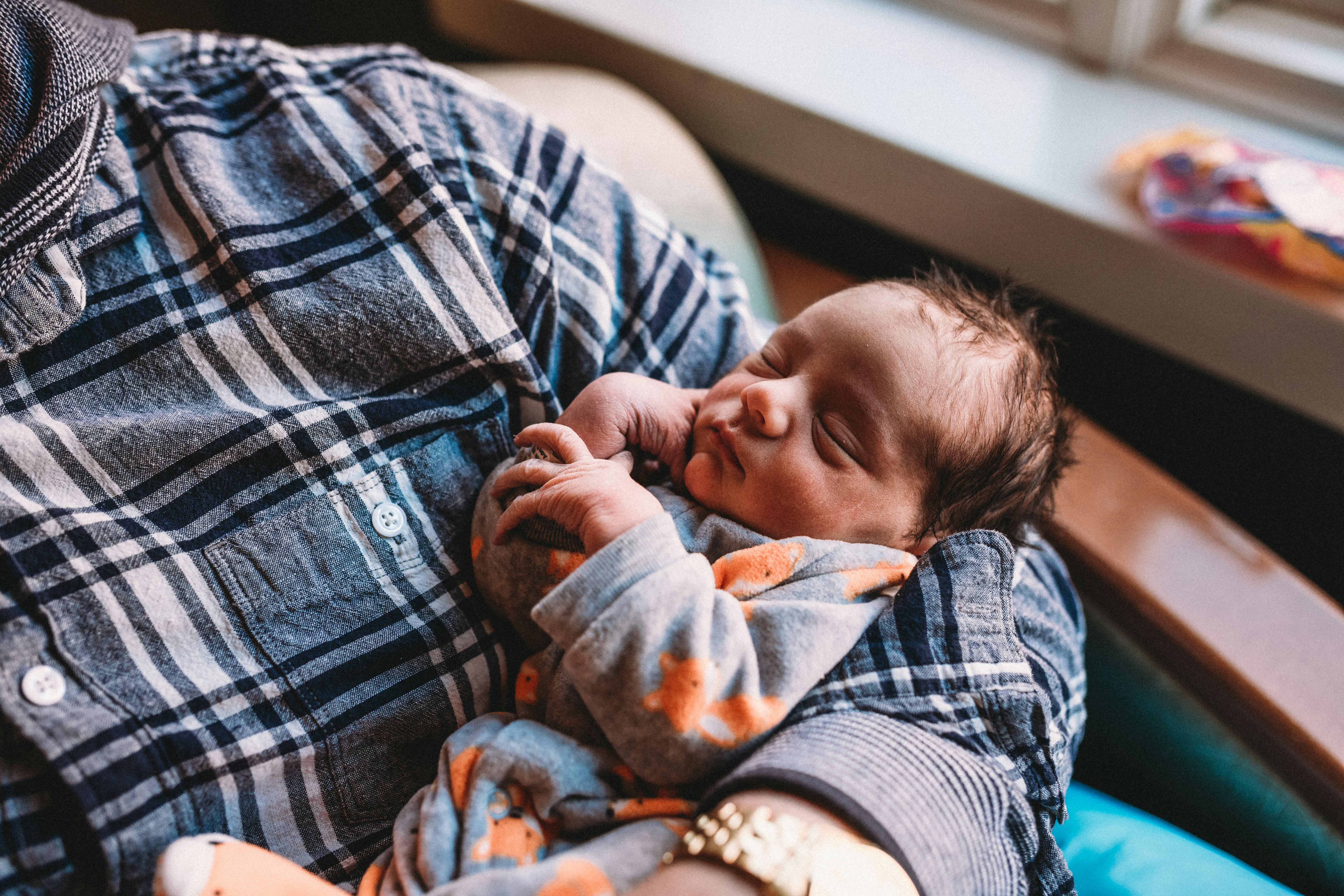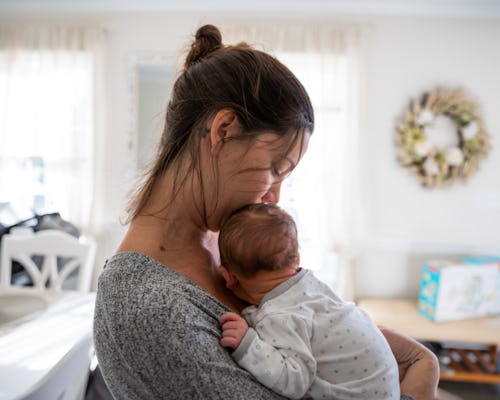
Whether you live in an area where you're used to tundra-like temperatures or you reside in a more tropical climate where a drop in degrees is a big deal, keeping your baby warm and comfortable when the heat goes out is a top priority for any parent. Aside from the regular challenges of winter weather with a wee one, getting blindsided by a worst case scenario situation is never fun. (Basically, the saying, "hope for the best and prepare for the worst," should be the mantra for parents everywhere.)
Perhaps the most difficult aspect of making sure your little one is nice and cozy, despite frigid temperatures, is that a baby has far more health and safety concerns than an older child does. For instance, you can pile on the blankets and pillows for your grade-school kiddo, but that would be a definite breathing hazard for an infant.
It’s also important to note that the signs your baby is too cold can include seeing mottling of their extremities, says Dr. Gina Posner, a board-certified pediatrician at MemorialCare Orange Coast Medical Center in Fountain Valley, California. If their hands and feet are cold to the touch, and if the back of their neck is cold, those are a few other things to check out on your baby if the heater goes out.
Other signs include if they’re overly fussier than usual or if they’re still and quiet — and even if they start sneezing, a Romper article reported. As Dr. Daniel Ganjian told Romper, “When your baby starts sneezing, usually it is a sign they are cold. This is due to a response connected to the hypothalamus, a part of the brain which controls temperature in the body. That is why babies usually sneeze when they are being changed.”
Additionally, if their skin is paler than normal, and it’s accompanied by inactivity and lethargy, your baby could be developing hypothermia. If this happens, Posner says to slowly warm them up by swaddling them in blankets or doing skin to skin immediately.
Otherwise check out these surprisingly simple (and safe) ways to keep your baby warm when the heat goes out.
Keep Your Baby Dry
If you have a newborn or small infant, wetness is just a daily part of life. Whether it's spit-up, wet diapers, or just a crazy amount of drool, moisture can be difficult to avoid. According to Today, changing out of wet clothes and staying dry is key to preventing hypothermia when the power goes out when it's cold outside. It can be time-consuming to ensure your baby is always dry, but you'll breathe easier knowing that they won't become unnecessarily cold due to wet clothes.
Warm Your Baby's Crib Sheets
Since bundling up your baby with blankets isn't a safe option, how can you keep your baby warm while they sleep? Dr. Judith Owens, a pediatric sleep expert, told Baby Center, "to warm cold sheets, place a hot water bottle or a heating pad in the bed for a while before bedtime." Obviously you'll want to remove the heating items before you put your baby to sleep, and it's also a good idea to check that the sheets aren't too warm first, but it could be a nice way to give them some extra warmth.
Pick One Room To Stay Warm
If you don't have heat because the power is out, you might want to consider ways to keep warm for a longer period of time. Laurie Neverman, a former solar engineer and current energy educator, told Commonsense Homesteading, "living and sleeping in a single room will help conserve heat." Neverman further explained further that adding rugs or layers to your chilly floor will help keep you and your baby warm from top to bottom when the heat goes out.
Additionally, Posner tells Romper, “I would suggest if you have a back-up generator that can at least run a space heater, you can all congregate in one room with the space heater. If you have a wood-burning fireplace, suggest a campout in that room and make a nice warm fire — with protection so that the child can’t get into the fireplace."
Put On Sleep Sacks

It might be tempting to swaddle your baby in lots of layers to keep them warm, but that could be risky. Instead, you can try using sleep sacks. According to the official site of Halo, a top brand for baby sleep sacks, "a newborn cannot regulate his temperature as well as an adult, so swaddling keeps his body warm." The perk of using a sleep sack is that it allows your baby to stay mobile without becoming too stifled.
Increase Skin-To-Skin Time
People have various opinions about bed-sharing, but even if you're not sleeping in the same space with your infant, you can still keep warm. Parenting suggested that "if your baby sleeps in your bed, she'll get extra heat from you." The bottom line is that skin-to-skin contact is a great way to keep both you and your baby warm when the heat goes out, so take some extra time to snuggle up.
Add Layers To Windows & Doors In Your Home
You can either prepare your home in the anticipation that your heat or power might go out, or you can face things head on as they happen. Try caulk or weather-stripping to keep drafty windows warm, or keep insulated curtains drawn. If all else fails, Posner suggests heading to an open hotel for some warmth and safety.
Add Mittens, Booties, & Breathable Caps
Since you don't want to risk overheating your baby with too many layers of clothing, there are other ways to ensure they are comfy and cozy. Baby Center suggested simply adding things like mittens, booties, and breathable caps to keep your little one warm, even when the heat goes out. As always, frequently checking in to make sure they aren't too hot or too cold is your safest bet.
Experts:
Dr. Gina Posner, pediatrician, at MemorialCare Orange Coast Medical Center in Fountain Valley, California
Dr. Daniel Ganjian, pediatrician at Providence Saint John’s Health Center in Santa Monica, California

0 comments:
Post a Comment